Hydrangeas

Hydrangeas are a classic staple of flower gardens, and they're particularly popular when Easter and Mother's Day roll around. No matter what your favorite color is, there's almost certainly a hydrangea variety that you will absolutely love. Although older varieties can be finicky to care for, newer varieties have been developed that are much easier to keep alive, even if you don't have a green thumb.
Planting Tip: Hydrangeas are more shrub than flower and can grow to be 20 feet tall or wide. So, when planting them, plan ahead and make sure that you have plenty of room around them for them to grow and thrive.
Zinnias

These almost exotic flowers look similar to dahlias and attract butterflies. Planting them on Mother’s Day will guarantee they make an appearance by early July.
Planting Tip: Zinnias don’t do well after transplantation so make sure to place them where you want them based on height and color. Taller varieties should be spaced at least a foot apart.
Canna Lilies
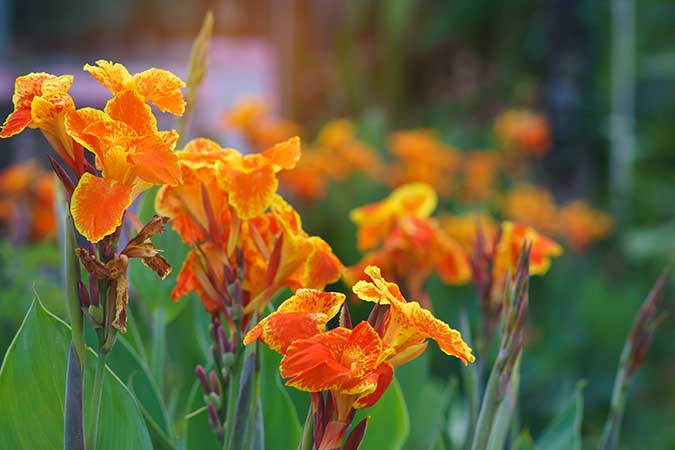
These tropical-looking blooms can be red, yellow, or orange and have lush foliage to add an exotic look to your garden. You can place them in mixed borders or group plantings to get the most dramatic effect.
Planting Tip: Planting them after the threat of frost has passed will give them time to establish themselves and yield the most intense blooms all season.
Stargazer Oriental Lily
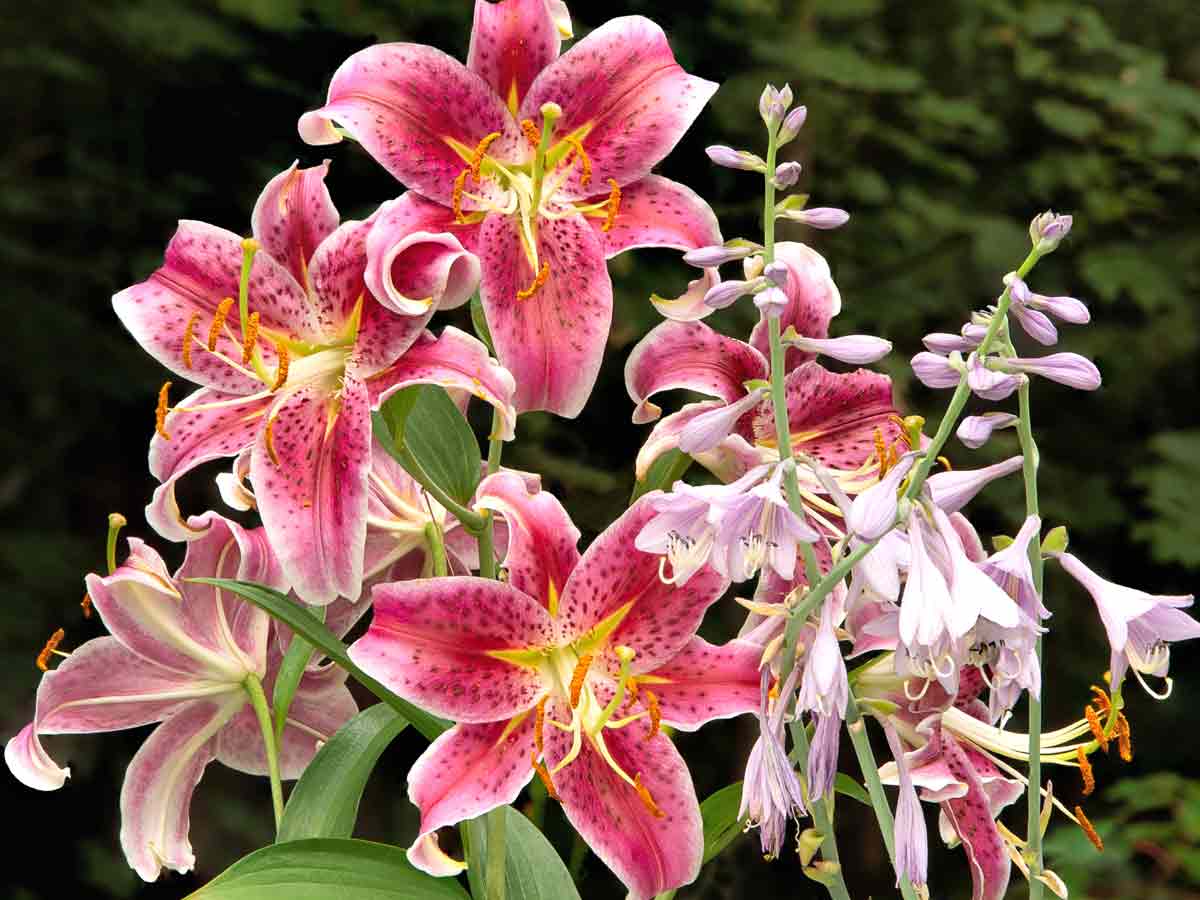
There are tons of lily varieties out there, but one of the most colorful has to be the "Stargazer" oriental lily. These bright pink blooms are beautiful and highly fragrant, and they bloom in the middle of summer—meaning that spring is the perfect time to plant them.
Planting Tip: This is one flower you definitely want to avoid if you have cats. All varieties of lily, including the Stargazer, are highly toxic to them. Thankfully, there are plenty of equally colorful, safe alternatives for cat fans out there!
Daylilies
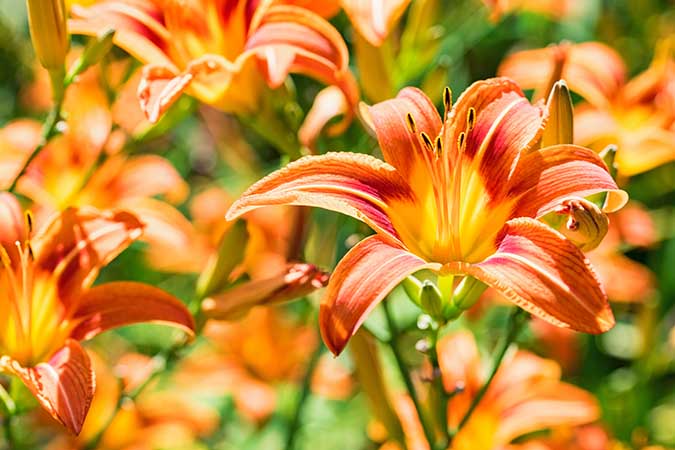
These unique, multi-flowered stems can grow in all types of soil, require very little attention, and will grow for years and years. What gives them their unique quality, you ask? They bloom in the mornings and die again by nighttime.
Planting Tip: These beauties are best grown in full sunlight. Also, they are best for landscape planting in groups of three or five, or they can be mass planted along a fence line for a dramatic effect.
Lavender

The buds of this beautiful flower are actually fragrant herbs that are a natural antiseptic. They can be useful for things like cuts, burns, insect bites, and other skin irritations. Not to mention that their fragrance can help to relax or destress and attracts butterflies and birds to your garden.
Planting Tip: Each plant can flower 300 – 400 stems during full bloom, but they need a dry and arid climate. Some hybrids like Sweet Lavender or Provence Lavender can tolerate humidity better.
Irises

These loud and proud flowers come in a wide spectrum of colors and are a beautiful addition to any yard; however, they do better in a bed of their own. Spreading them across a landscape gives the most dramatic effect.
Planting Tip: These flowers need at least six hours of sunlight per day with good soil drainage. Plant them in groups of three, at least one to two feet apart. In addition, dividing the bulbs every few years will reinvigorate growth.
Hellebore

While it's not the flashiest flower you'll encounter, the hellebore is a great, beautiful addition to your spring garden. These dark purple blooms can last for years to come as long as you give them the TLC they need to make it through that first growing season. Once that's over with, they rarely need to be watered.
Planting Tip: Planting hellebore in raised flower beds can help you to appreciate their beauty more. Since they bloom downward, it can be difficult to see the flowers if they are planted directly in the ground.
Blanket Flowers

These flowers can come in multi-colored fashion and look like a miniature sunset or they can come in solid shades of yellow, wine, red, orange, and peach give a long-lasting show of bright foliage all season long. They thrive in sunny, dry, and rocky conditions and need little to no care.
Planting Tip: This particular flower does not do well when fertilized. The average amount of rainfall each season is enough water for them to grow but may need watering in conditions of drought.
Sweet Pea
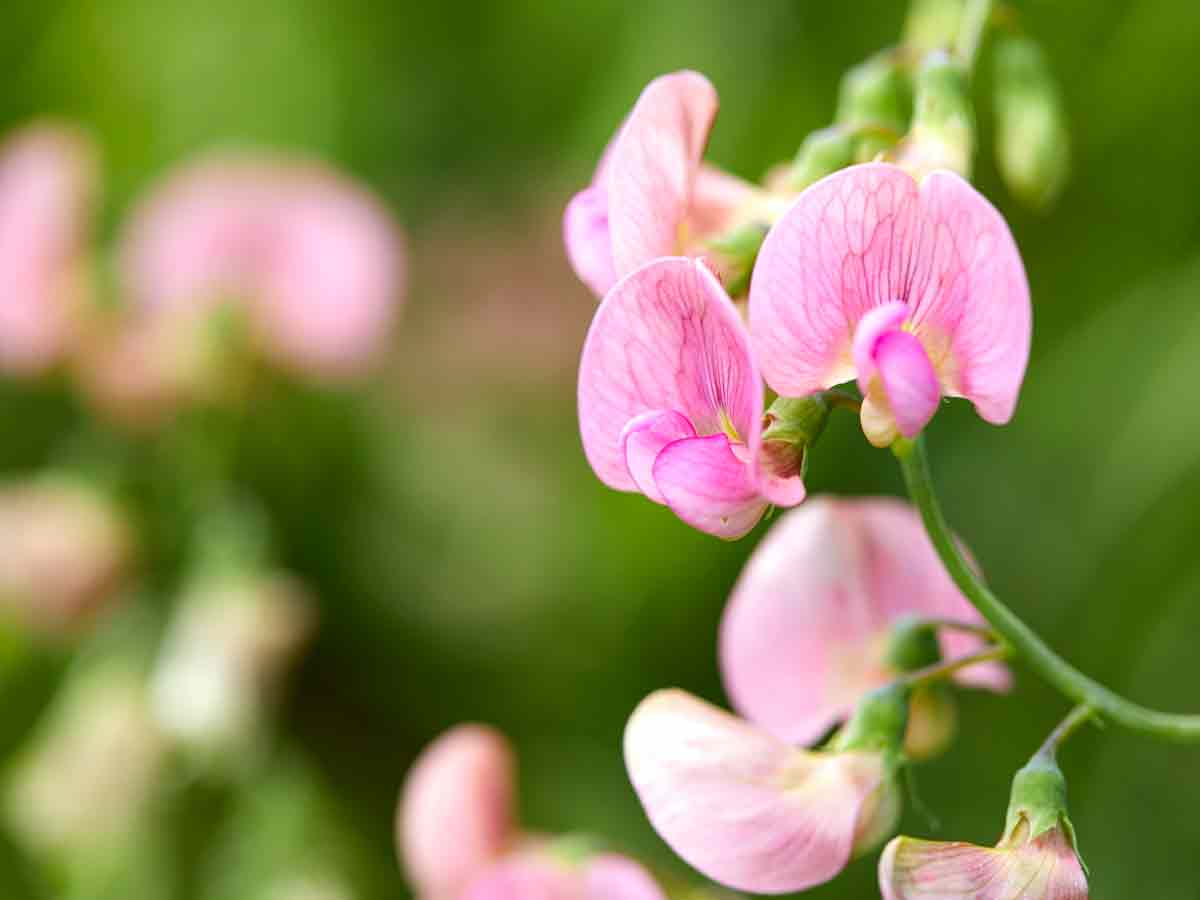
Sweet Peas are the perfect addition if you want your garden to have a quick and colorful pop in the spring. You can find them in basically any color you can imagine, so coordinating them with your other flowers shouldn't be a problem at all.
Planting Tip: The heat of summer will pretty quickly hurt your sweet peas, so be sure to plant them as early as possible in the spring season. However, if you live in the northern United States, your Sweet Peas may stick around a bit longer than usual.
Gladiolus
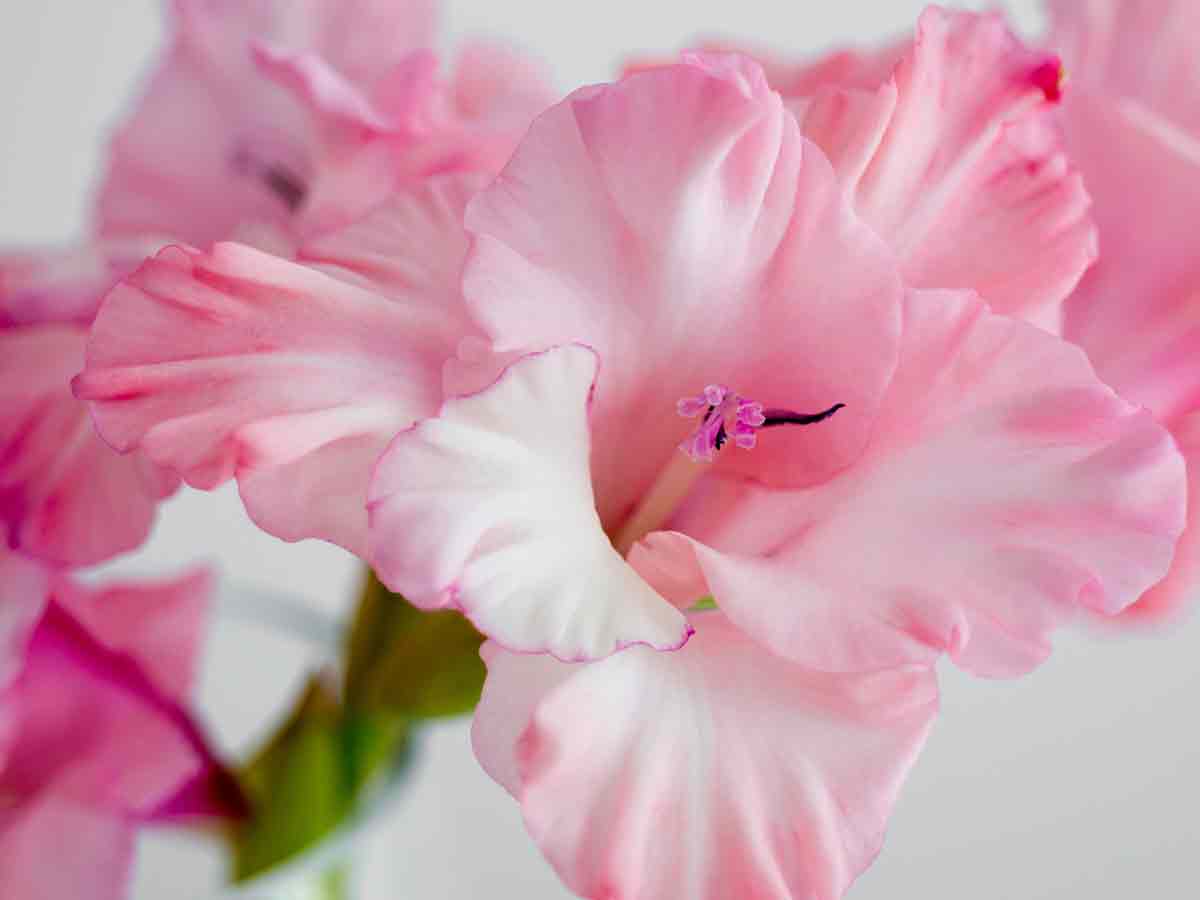
Gladiolus is technically a summer flower, but you need to go ahead and plant their bulbs in spring if you want them to thrive. These beautiful flowers come in all shades of orange, red, and yellow, and, because they're so tall and thin, they can add a burst of color without taking up a ton of room in your garden.
Planting Tip: When planting gladiolus, place them close enough that they can lean on one another as they grow. If this isn't possible, you'll need cages or other accessories to help keep them upright as they grow.
Sedum
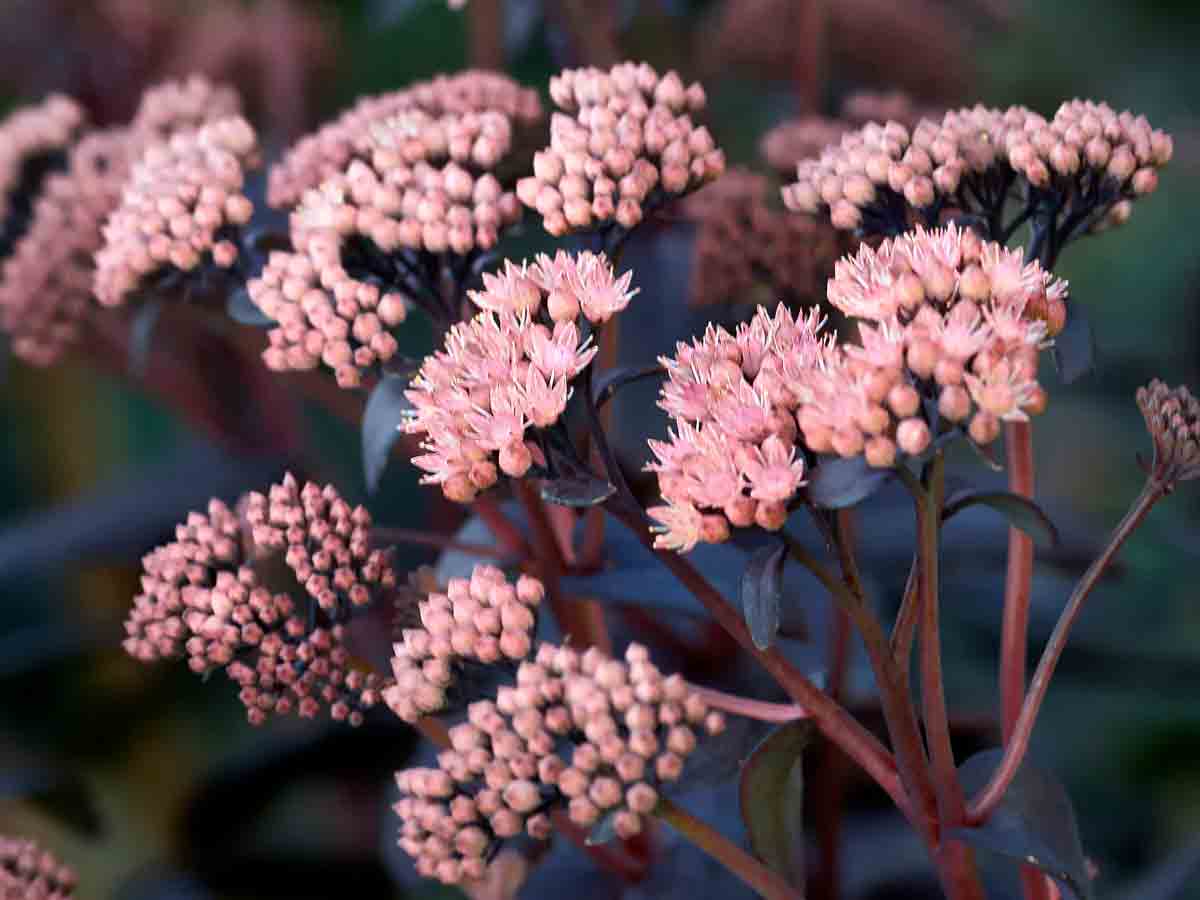
You've got to be patient with sedum flowers. They need to be planted in early spring, but you won't actually see them bloom until late summer. However, they are more than worth the wait, as they bloom brightly and remain beautiful even after they have died and dried up.
Planting Tip: Sedum flowers don't like too much of a good thing, so be sure not to overwater them, as the plants are particularly susceptible to root rot. Additionally, they should be planted in sandy, nutrient-poor soil, as this is where they thrive best.
New England Aster

Although it has New England in the name, you can find the New England Aster naturally occurring in over half of the fifty states. These flowers have a rustic, wildflower look about them, and they're perfect for a beginning gardener, as they're not too finicky about things like soil quality.
Planting Tip: If the New England asters you planted in the spring begin to wilt, don't give up hope on them yet. Although they might not look like they're in great shape in the heat, they can perk back up as temperatures cool down into fall.
Monkshood
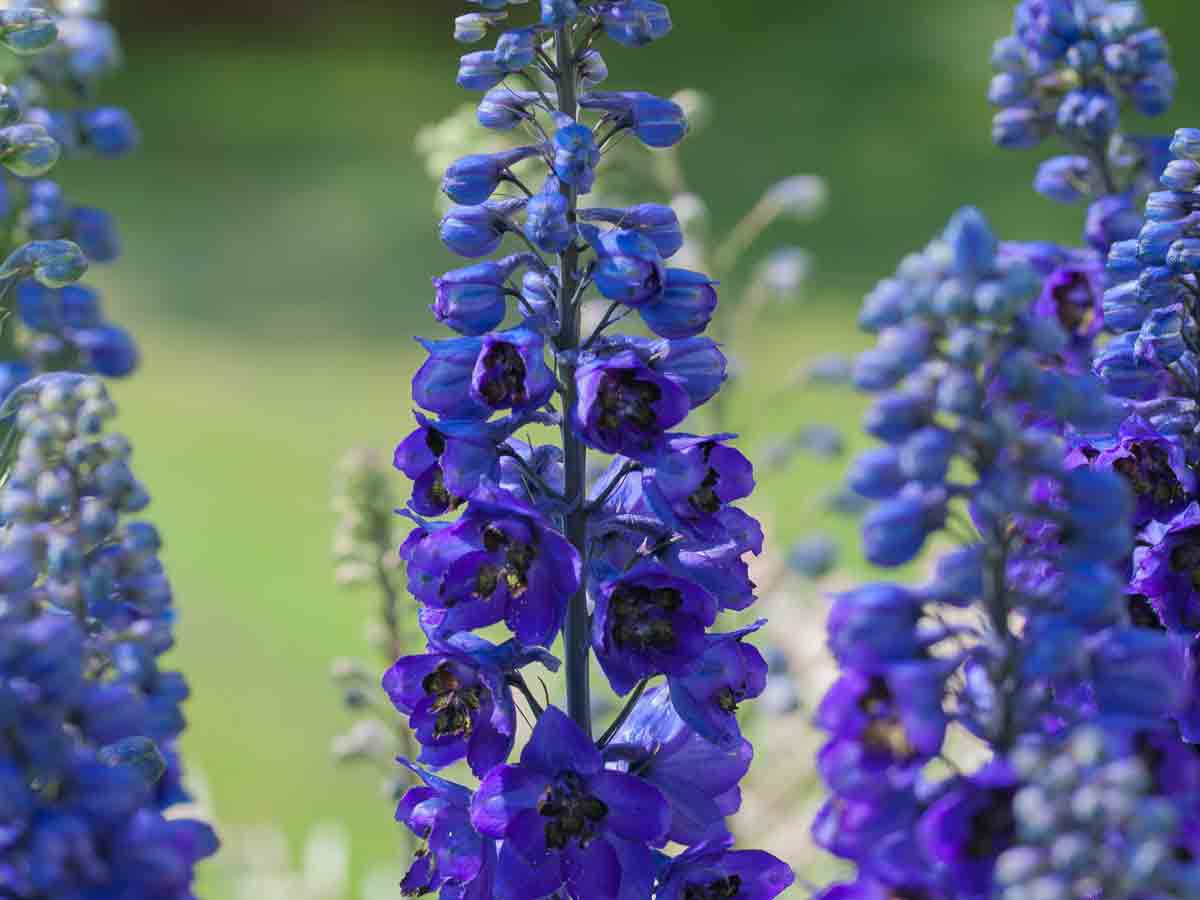
Although you won't see the results of your hard work until late fall, monkshood flowers should be planted in the spring to look their best. While they won't look like much for a while, when these purple-blue flowers bloom, they really steal the show in your garden.
Planting Tip: While they look beautiful, Monkshood is actually poisonous to humans and pets. You can absolutely grow them safely, but it's best to use gloves when handling them, and they should never be cut and used as part of a flower arrangement.
Bleeding Heart

If you want a unique change of pace in your garden, you can't do better than planting bleeding hearts. It's easy to see how these unusually shaped flowers got their name, and they are truly gorgeous to look at. Bleeding hearts do best in the spring and the beginnings of summer, so be sure to plant them as early as possible.
Planting Tip: Bleeding hearts don't like a lot of sun and heat, so be sure to plant them in the shade, especially if you live in a hot, humid area like the South. However, in cooler climates, they can do with more direct contact with the sun.
Pansies
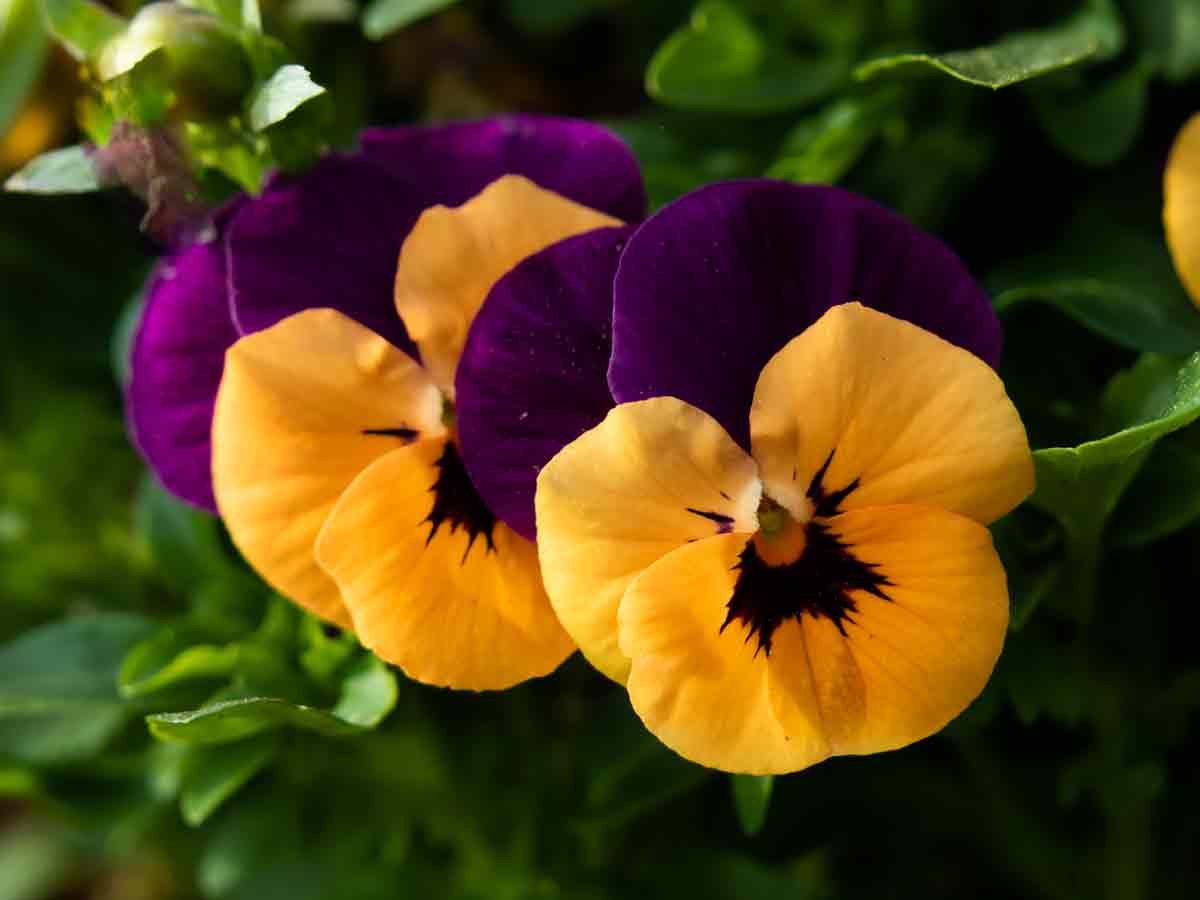
Pansies are a colorful addition to any spring garden, and they come in a dizzying array of varieties. They thrive in the moderate temperatures of the season and are a spring staple around the country. Some varieties are also edible, so they could even go in the herb garden.
Planting Tip: Pansies thrive in a temperature range from about 40 degrees to 60 degrees. Some varieties can take the summer heat, but it's usually best to just compost them once summer rolls around.
Coneflowers

Also known as echinacea, the fiesta variety provides a riot of color with coral-pink flowers and attract birds, bees, and butterflies. The most common species of coneflowers bloom in purple and are most commonly sold as small plants but can bloom to be two to four feet in height with dark green foliage.
Planting Tip: These are trouble-free flowers, drought tolerant, and bloom best in the full sun with well-drained, rich soil. Be careful when picking them, though! Their stems can be quite sharp!
California Poppies
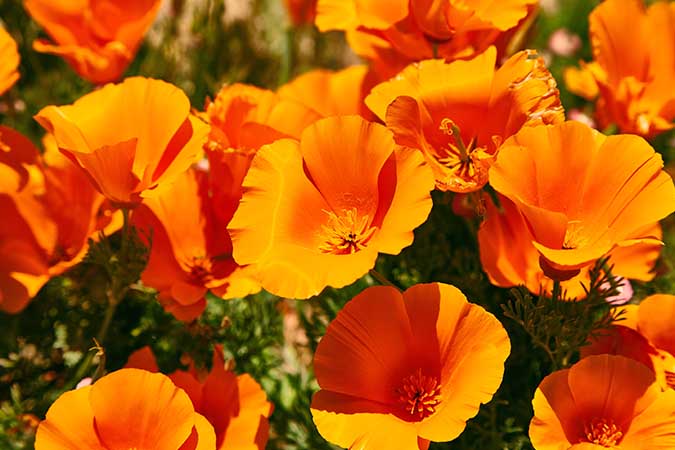
These beauties can grow from six to 15 inches and come in reds, pinks, oranges, yellows, and cream colors. The best time to sow these seeds is when a light frost is still possible, when the soil is still cool.
Planting Tip: These pretties don’t thrive well in rich or wet soil, nor can they tolerate transplantation. Once fully bloomed, deadhead them periodically to encourage continuous blooms all season.
Moonflowers
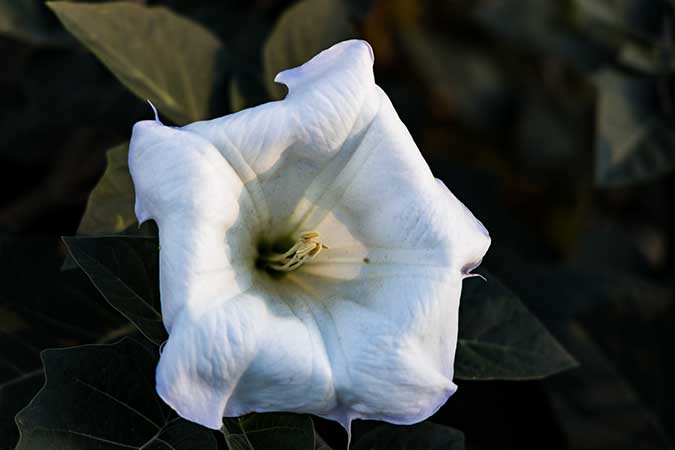
These beautiful white flowers are a magical addition to any summer garden. They have a light fragrance when they bloom in late afternoon each day in July and August.
Planting Tip: Before planting, nick each seed with a sharp knife and soak them in water for at least 24 hours until a tiny growth appears. Plant the sprouted seeds six inches apart, cover lightly with soil, and water them liberally.
Mexican Sunflowers
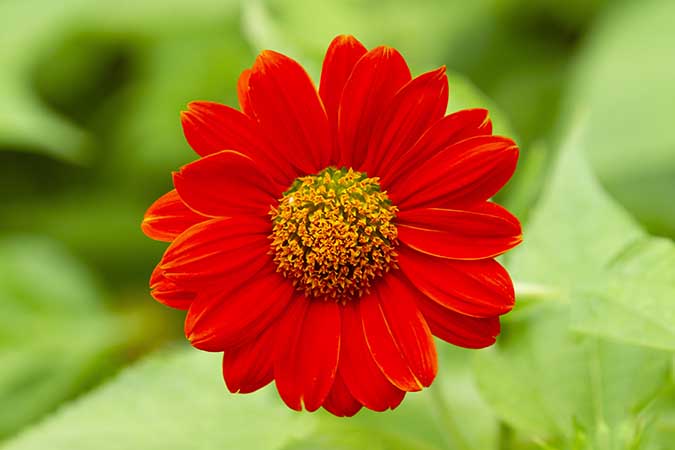
This variety of sunflower can give your garden a more exotic look than the normal variety. They can grow from 30 inches to eight feet tall and are shrub-like so planting them in a row at the back of your garden can add a unique display.
Planting Tip: These flowers need a spot where they can get full sun most of the day and can’t tolerate too much rain or rich soil. Deadhead often for continuous growth.
Dahlias

Dahlias are stunning, colorful flowers that bloom in a wide range of sizes and shapes, making them a popular choice among gardeners. These flowers are native to Mexico and Central America, and are known for their vibrant hues and intricate petal formations.
Dahlias are typically planted in the spring because they require warm soil temperatures to germinate and grow. Planting dahlias in the spring ensures that they have ample time to establish their root systems before the hot summer months arrive. With proper care, dahlias can provide a dazzling display of color in the garden from mid-summer until the first frost of the fall.
Black-Eyed Susan

Black-eyed Susans are bright, cheery flowers that are native to North America. These yellow or gold-petaled flowers with dark centers are a popular choice among gardeners because they are easy to grow and require minimal maintenance. Planting black-eyed Susans in the spring is recommended because they require warm soil temperatures to germinate and establish their root systems.
Spring planting also allows for the optimal timing of blooming, which typically occurs from midsummer to early fall. With their vibrant color and ability to attract pollinators such as bees and butterflies, black-eyed Susans are a wonderful addition to any garden.
Morning Glory
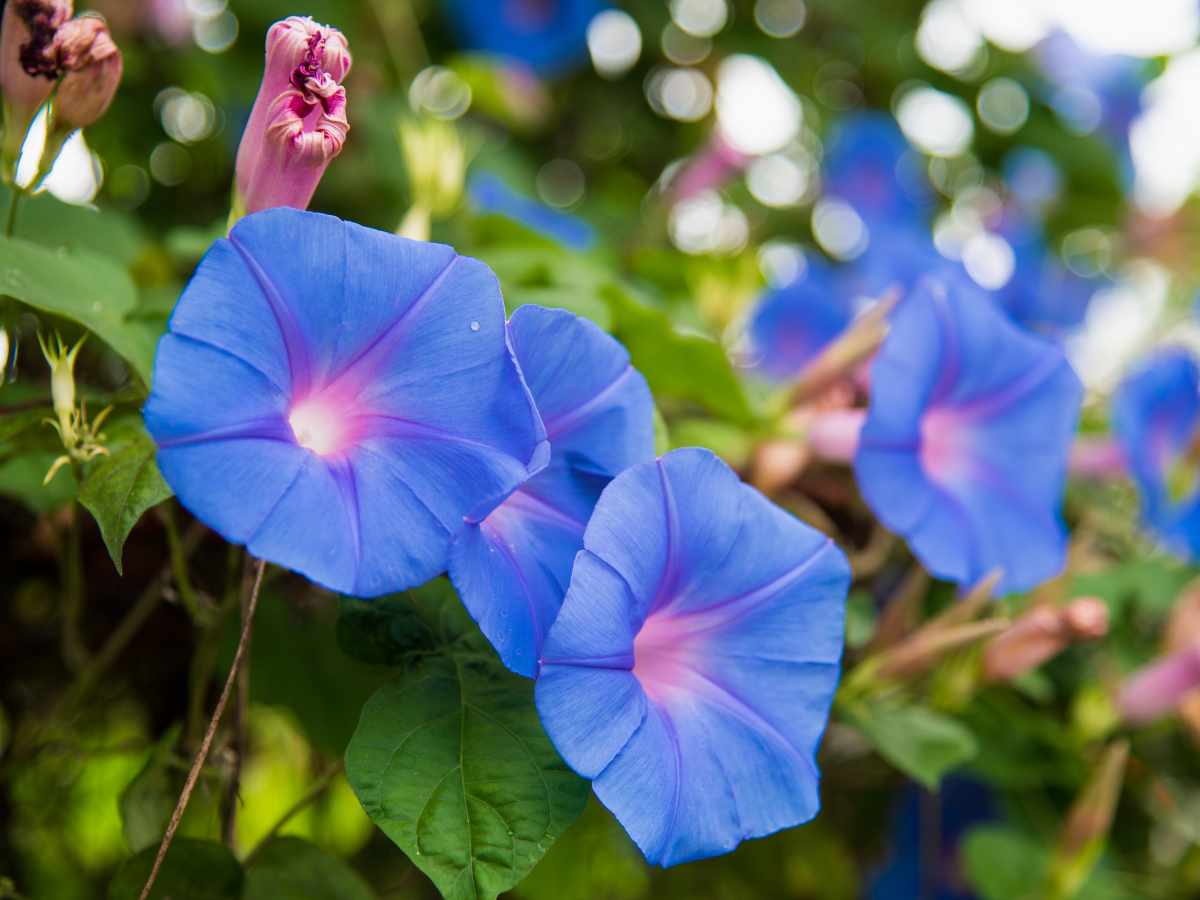
Morning glories are beautiful vines that produce bright, trumpet-shaped flowers in a range of colors including purple, pink, blue, and white. They are typically planted in the spring because they are a warm-season annual that requires warm soil temperatures to germinate and grow.
Spring planting allows for an early start and ensures that the plants have ample time to establish themselves before the hot summer months arrive. Morning glories are also easy to grow and can quickly cover a trellis, fence, or arbor, providing a stunning display of color throughout the summer. Their fast growth and prolific blooming make them a favorite among gardeners.
Petunias
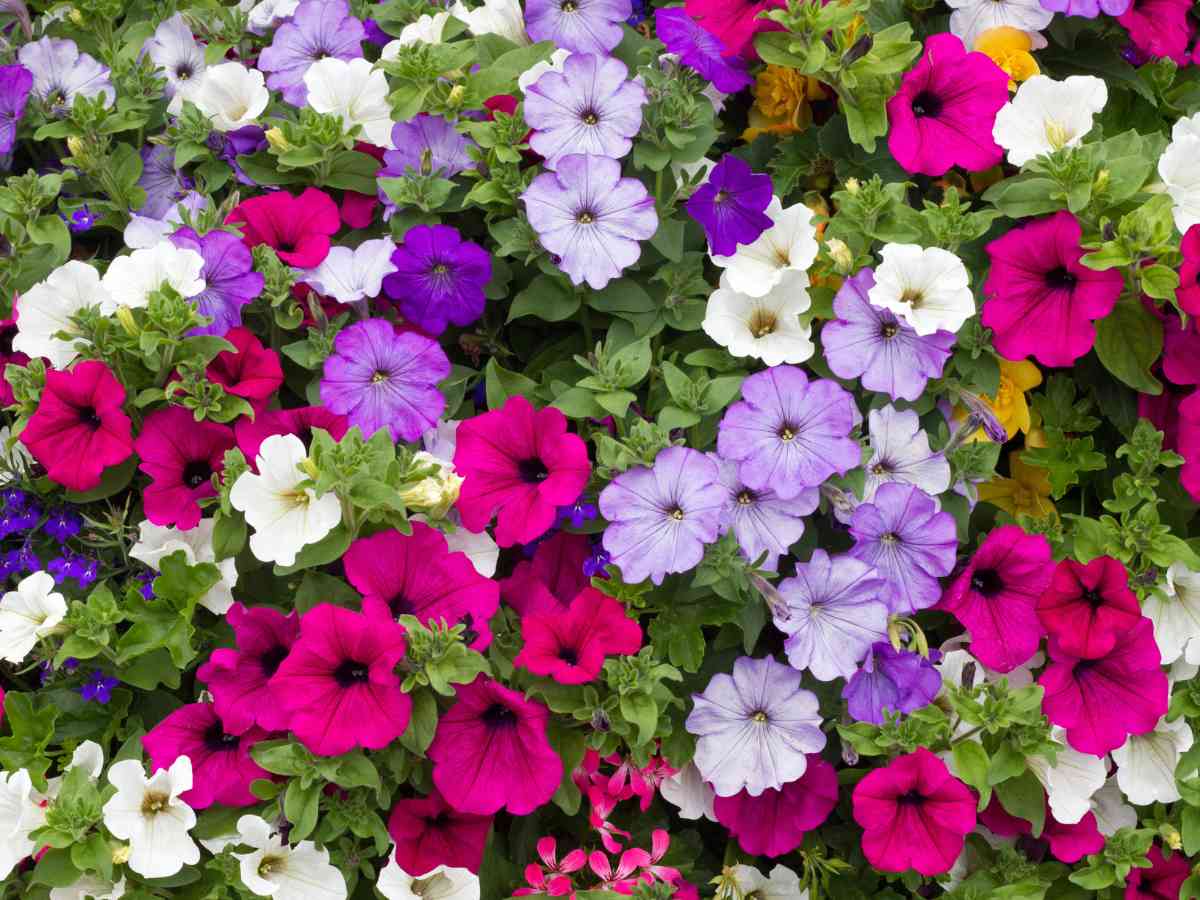
Petunias are a popular annual flower that come in a wide range of colors and varieties. These trumpet-shaped flowers are often used in hanging baskets, containers, or garden beds to add a burst of color to any landscape. Petunias are typically planted in the spring because they require warm soil temperatures to germinate and establish their root systems.
Spring planting also ensures that the plants have enough time to grow and mature before the hot summer months arrive. With proper care and maintenance, petunias can bloom all summer long, making them a popular choice for gardeners looking to create a vibrant and colorful garden.
Marigold
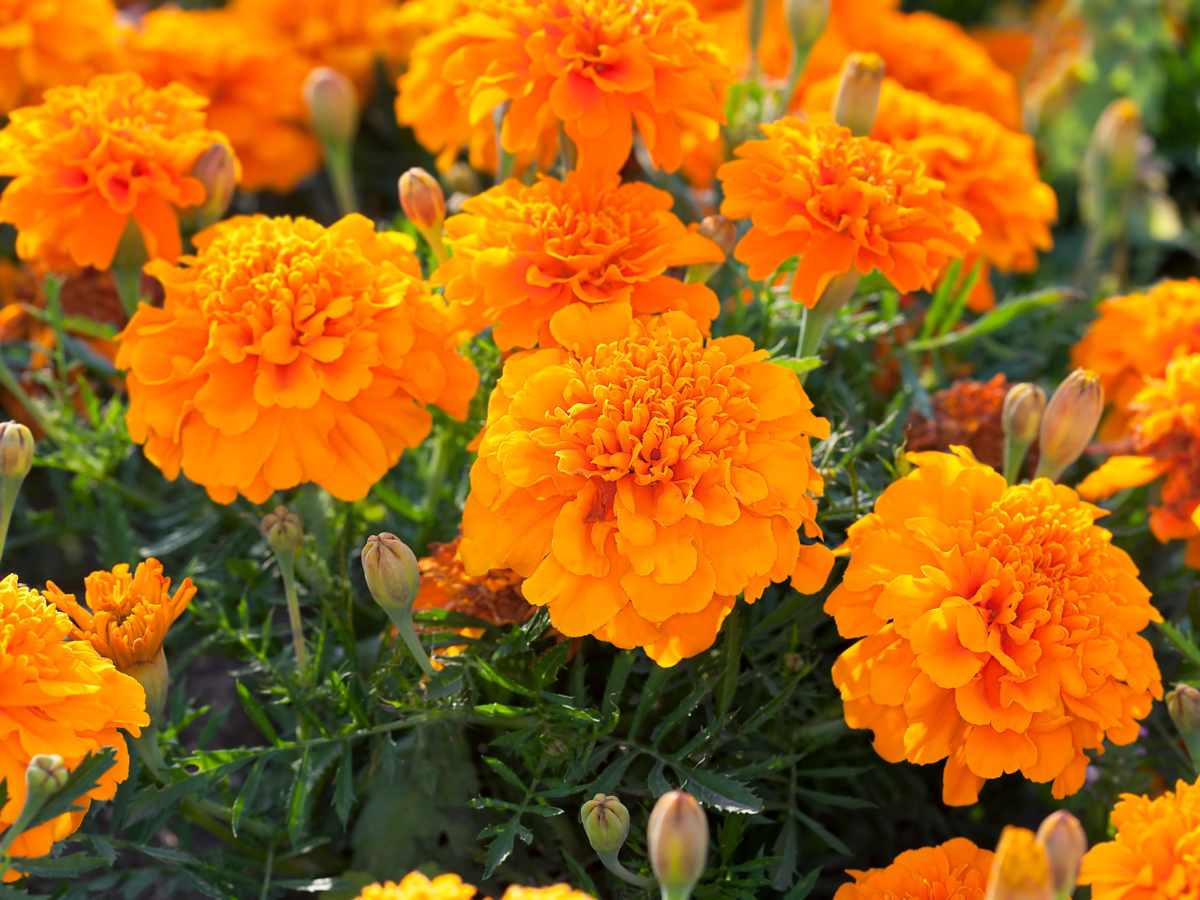
Marigolds are a popular annual flower that are easy to grow and come in a variety of colors, including yellow, orange, and red. These flowers are typically planted in the spring because they require warm soil temperatures to germinate and grow. Spring planting also ensures that the plants have ample time to establish their root systems before the heat of summer sets in.
Marigolds are a great addition to any garden, as they are not only beautiful but also repel pests such as aphids and mosquitoes. With their bright colors and low maintenance requirements, marigolds are a popular choice for gardeners looking to add color and functionality to their gardens.
Butterfly Weed
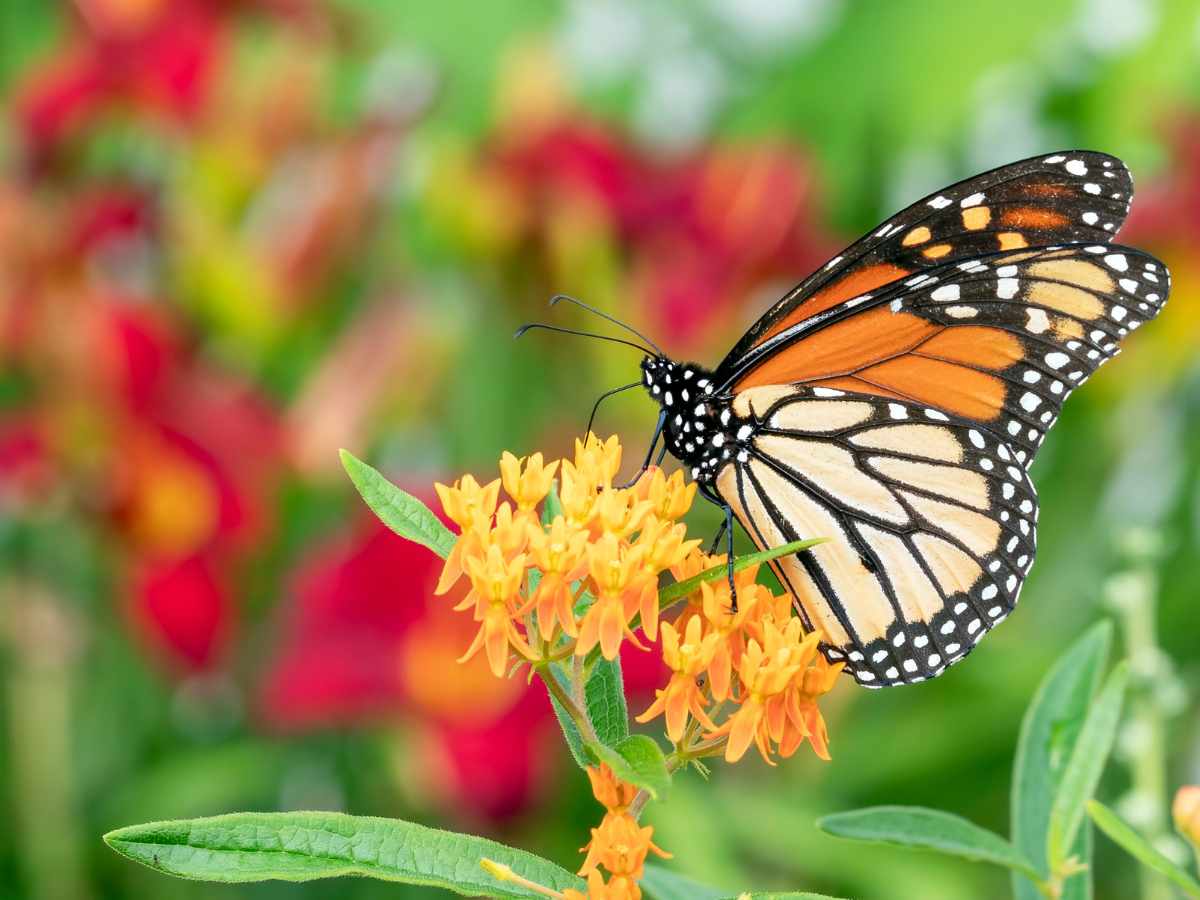
Butterfly weed, also known as Asclepias tuberosa, is a beautiful perennial flower that is native to North America. This bright orange flower blooms in the summer months and is a favorite among gardeners because it attracts a wide variety of butterflies and other pollinators.
Butterfly weed is typically planted in the spring because it requires warm soil temperatures to germinate and grow. Spring planting allows the plant to establish its root system before the hot summer months arrive. Butterfly weed is also drought tolerant and easy to care for, making it a great addition to any garden.
Primrose
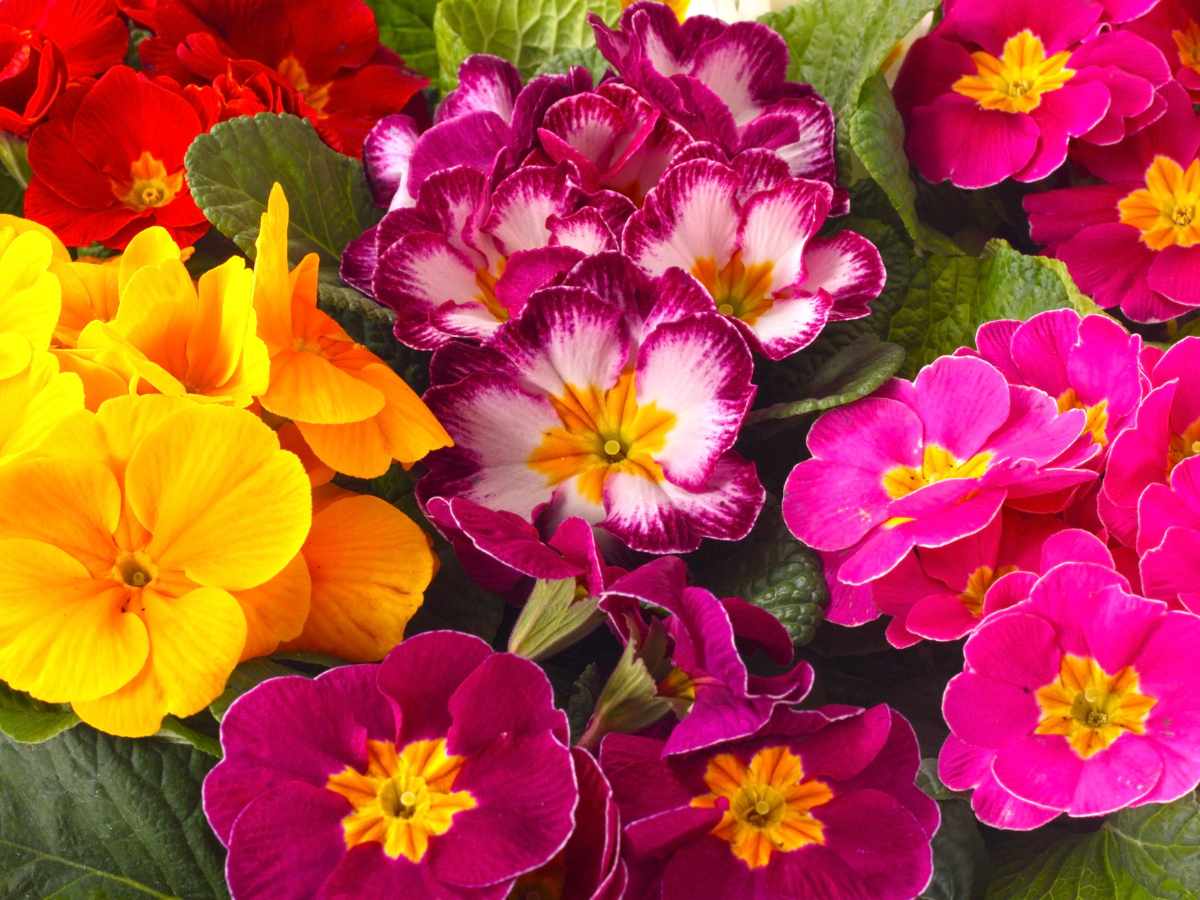
Primrose is a popular spring-blooming perennial that produces delicate, colorful flowers in shades of pink, purple, and white. These flowers are typically planted in the spring because they prefer cooler temperatures and moist soil conditions, which are typically found during the spring months.
Spring planting also allows the plant to establish its root system before the hot summer months arrive. Primrose is a low-maintenance plant that is easy to care for and can be grown in garden beds or containers. With their stunning blooms and early season flowering, primrose is a great choice for gardeners looking to add color to their spring garden.
Tickseed

Tickseed, also known as Coreopsis, is a beautiful and easy-to-grow perennial that produces bright yellow or golden flowers in the summer months. It is typically planted in the spring because it prefers warm soil temperatures to germinate and grow.
Spring planting also allows the plant to establish its root system before the hot summer months arrive. Tickseed is a low-maintenance plant that is drought tolerant and can thrive in a wide range of soil conditions. With their vibrant blooms and long flowering period, tickseed is a great choice for gardeners looking to add color and texture to their summer garden.
African Daisy
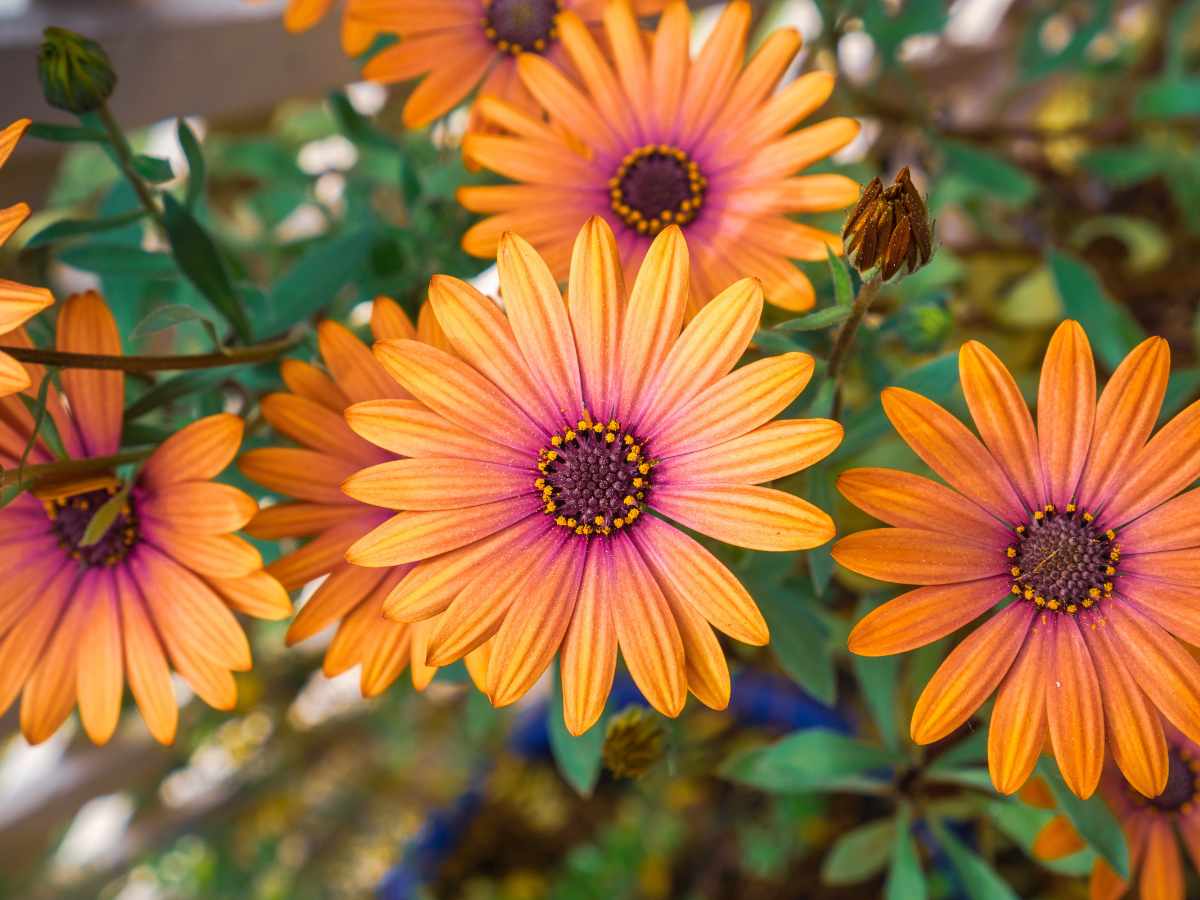
African daisies, also known as Cape daisies, are a beautiful annual flower that come in a range of colors, including pink, purple, orange, and white. These flowers are typically planted in the spring because they require warm soil temperatures to germinate and grow. Spring planting also allows the plant to establish its root system before the heat of summer sets in.
African daisies are a low-maintenance plant that can tolerate a variety of soil conditions, making them a great choice for gardeners looking for an easy-to-grow flower. With their striking blooms and ability to attract pollinators, African daisies are a beautiful addition to any garden.
Wild Rose
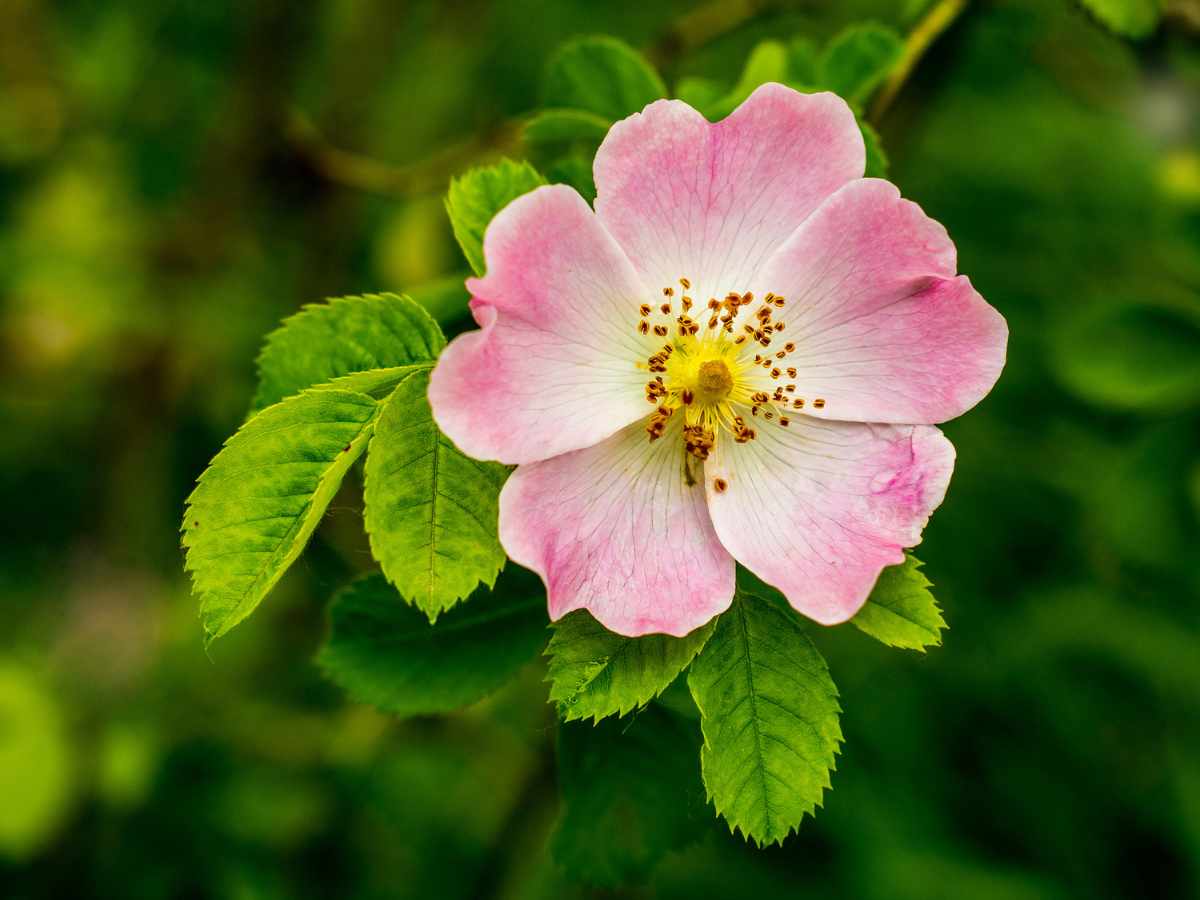
Wild roses are beautiful, hardy, and low-maintenance shrubs that are typically planted in the spring. This is because the cooler temperatures and moist soil conditions during the spring months provide ideal growing conditions for the plants. Spring planting allows the shrub to establish its root system before the hot summer months arrive.
Wild roses are also drought-tolerant and can thrive in a wide range of soil conditions. They produce delicate and fragrant blooms in shades of pink, white, and red and can attract pollinators such as bees and butterflies. With their beauty and adaptability, wild roses are a great choice for any garden.
 Author
Jennifer Freehill
Last Updated: July 05, 2025
Author
Jennifer Freehill
Last Updated: July 05, 2025